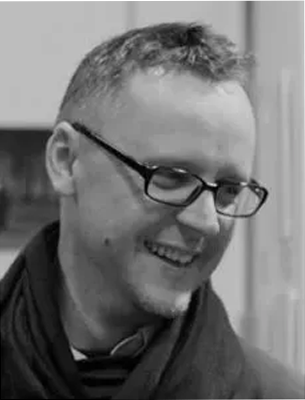Beyond Time
“This lofty metaphysical delusion is inherent in scientific research and leads it over and over again to its limits, at which point it must turn itself into art, something which is really predictable in this mechanical process.” (Friedrich Nietzsche: The Birth of Tragedy from the Spirit of Music)¹
Prolog
At the beginning of the 21st century, humanity is faced with an unprecedented flood of data fed via mass and social media, which is increasingly being generated by algorithms, artificial intelligence and “big data”. At the same time, a new, seemingly inexhaustible cosmos is opening up for the creative spirit, but it also raises questions.
Will the art process in the future still be tied exclusively to imagination and interpretation by the artists themselves? How and in what way does our body and our mental state interact in the constant alternation between virtual and real space? At least the question of the artistic originality of the works shown here can be answered in the affirmative, despite the technical conversion to NFT formats.
The title of the project “Beyond Time” was an allusion to the literary works of the authors Martin Bojowald and Cixin Liu, who – each in their own way – unfold the history of the universe and the future of mankind.2, 3
“Hasn’t time time?”
(Friedrich Nietzsche: Die Fröhliche Wissenschaft)
The Beyond Time project sees itself as a digital research medium and instrument to create sensory theses and sensitivities about being human from unusual perspectives in the border area of science, philosophy and speculation and thus activate inaccessible areas of perception and consciousness.
Caroline Welsh and Stefan Willer define art and science as two existing knowledge cultures that are mutually dependent. According to them, art is related to science and vice versa according to the rules of a mathematical set. Agreements are possible and differentiations are necessary at the same time.4 A logical artistic strategy that the project pays special attention to is “The Experiment in Contemporary Art” (discussed in detail in the book by Nicole Vennemann, published in 2018).5
Beyond Time is therefore primarily a compilation of works with an experimental-exploratory character, the spectrum of which includes post-surrealist paintings, iconographic photography and performative video acts as well as their post-futuristic expansion into or via internet in the form of a wide variety of memes, generative works , AI Art and of course NFT‘s.
When asked about the distinction between mere data visualization and intelligent algorithms that generate their almost hypnotic aesthetics from data, Refik Anadol, for example, uses metaphors such as memory, dreams, and hallucination as essential concepts of being human in the 21st century. “I have the feeling that human cognitive abilities, such as remembering, dreaming or even the learning process, are incredibly important in the discussion about intelligent algorithms.”6
On the other hand, the Dutch-Australian media scholar and net activist Geert Lovink questions information societies: how can we move from data to Dada and become a 21st century avant-garde that genuinely understands the technological imperative and shows that we are the social media in the social media? How do we develop and scale critical concepts, bringing together politics and aesthetics in a way that resonates with millions online?7
After all, artists such as Auriea Harvey, with VR-based crypto art, or Urs Fischer, who also uses characteristic meme montage techniques to develop NFT‘s 8 , are successful communicators in the image world of the Internet even without image-text strategies. “
Beyond Time” enables virtual and real visitors to the project to gain insights into the transformation of everyday social reality into an essentially subversive and unashamedly beautiful language of art”.
The project uses less energy-intensive variants of blockchain technology and, by making the works available as NFT‘s, initiates location- and time-independent access to the pool of current, experimental art happenings worldwide.
____________________________________
1 Friedrich Nietzsche: The Birth of Tragedy from the Spirit of Music, page 42, english version translated from German „Dieser erhabene metaphysische Wahn ist als Instinkt der Wissenschaft beigegeben und führt sie immer wieder zu ihren Grenzen, an denen sie in Kunst umschlagen muss: auf welche es eigentlich bei diesem Mechanismus, abgesehen ist.“ (Nietzsche, Friedrich: „Die Geburt Der Tragdie: Oder Griechentum Und Pessimismus“; Berliner Ausg., 2016, 4. Aufl., S. 61f., ISBN 978-1484049518)
2 Bojowald, Martin: „Zurück vor den Urknall – die ganze Geschichte des Universums“, S. Fischer Verlag, 2009, ISBN 978-3-10-003910-1
3 Liu, Cixin: „Jenseits der Zeit“ Bd.3 der Si-Fi-Trilogie „Trisolaris“, Wilhelm Heyne Verlag 4/2019, ISBN 978-3-453-31766-6
4 Welsh, Caroline / Willer, Stefan: »Einleitung: Die wechselseitige Bedingtheit der Wissenskulturen – ein Gegenentwurf zur Trennungsgeschichte«, in: Caroline Welsh/ Stefan Willer (Hg.), Interesse für bedingtes Wissen. Wechselbeziehungen zwischen den Wissenskulturen, München 2008, S. 9-20.
5 Vennemann Nicole: „Das Experiment in der zeitgenössischen Kunst-initiierte Ereignisse als Form der künstlerischen Forschung“, Dezember 2018, 286 S., kart. ISBN 978-3-8376-4624-5; E-Book:PDF: ISBN 978-3-8394-4624-9
6 Scorzin, Pamela C.: „Daten als Pigment“, Kunstforum Intertnational, Bd. 278; S. 166
7 Zaremba, Jutta: „Meme-Manifeste“, Kunstforum International, Bd. 279, S. 128
8 Zybok, Oliver: „Memes – Ursprünge und Gegenwart“, Kunstforum International Bd. 279, S. 79
